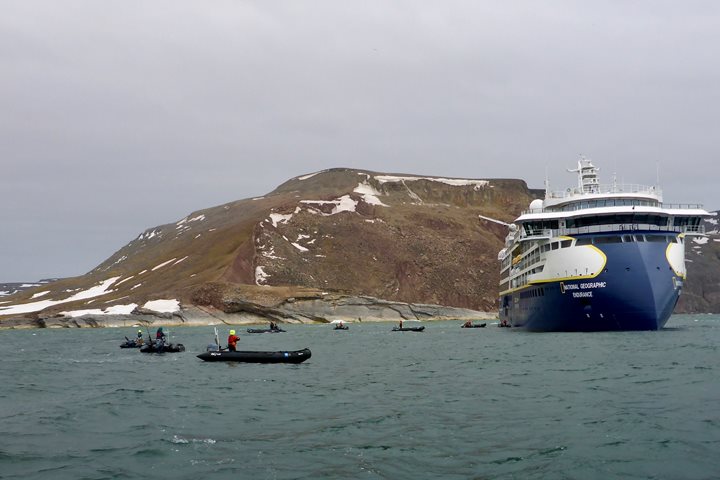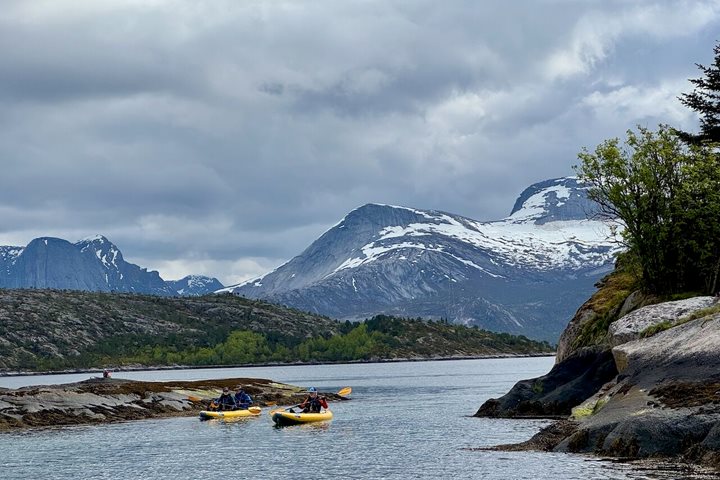On this final day of our voyage along the coasts of Norway and Svalbard, we spent the morning on an extended Zodiac cruise in Fjortende Julibukta (Fourteenth of July Bay). What a spectacular place to explore! Brünnich’s guillemots and black-legged kittiwakes nested on the narrowest ledges of steep cliff faces by the thousands, mostly tucked into the bay for shelter rather than on the exposed outer coast. Kittiwakes built nests of seaweed, grasses, and mud while this most northerly guillemot species crowded shoulder-to-shoulder on rock shelves barely visible without binoculars. A few Atlantic puffins were spotted in their crevice burrows, offering fleeting glimpses of their characteristic colorful beaks. All these seabirds leveraged the cliffs for protection from prowling Arctic foxes seeking an easy egg or chick meal.
Several pinnipeds were hauled out on shallow rocks near shore, including a juvenile bearded seal. And the Fjortende Julibreen glacial landscape, freshly dusted with snow, encouraged consideration of both the power and nuance of water, from tiny air bubbles remaining trapped in ice to sculptural pieces of brash hosting kittiwakes to the loose debris and trimline illustrating how substantially the glacier has retreated in recent years. For this excursion, guests embarked from the marina deck, allowing them to walk through the Zodiac garage and see the talented deck team hard at work stowing boats.
During final shipboard activities – including behind-the-scenes tours of the engine room and galley, photo collection for a culminating slideshow, last visits to the Global Gallery, and the dreaded packing – National Geographic Endurance cruised the tidewater face of Lilliehöökbreen Glacier. Ten major tributary glaciers feed this system, which reaches the ocean along an eleven-kilometer wide, semicircular front. Low, drifting clouds contrasted the blue hues of the ancient, compressed ice and jagged mountains – dramatic views out every window.
Naturalist Kerstin Langenberger gave the last lecture of the trip, guiding us through the process of determining whether each polar bear we’ve seen in Svalbard was male or female. With clues from neck and body shape, hair differences, and other physical features, we identified a young male, an old adult male, a solitary adult female, and a female with two cubs born just this past winter. This presentation as well as National Geographic photographer Ken Garrett’s evening image showcase highlighted the voyage’s many wonderful moments. Overnight, we’ll cruise south to Longyearbyen, sailing along Svalbard’s snowy western shores with gentle seas and many northern fulmars to accompany this final leg of our expedition.







